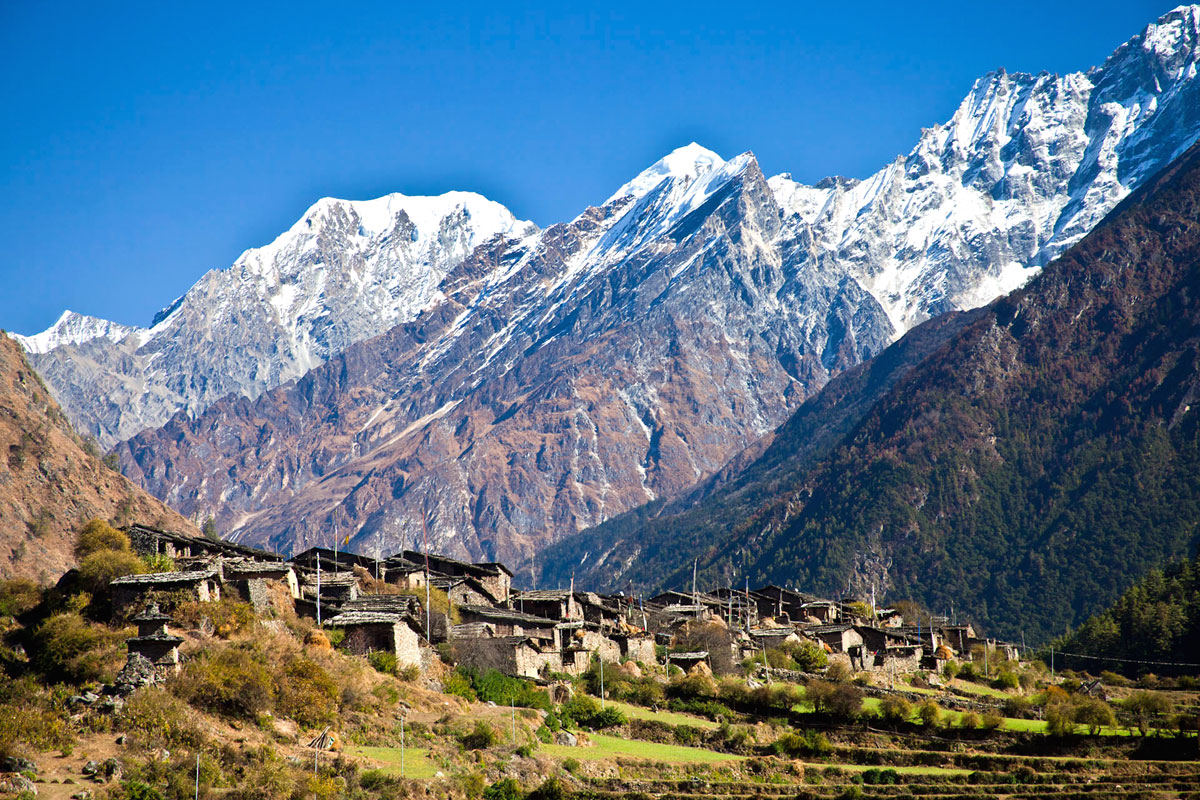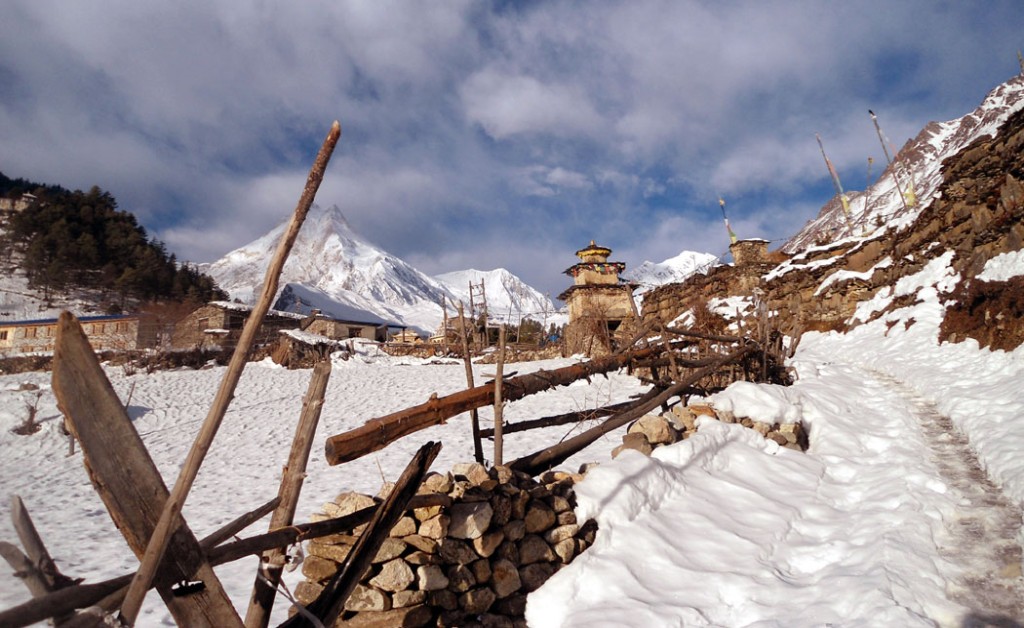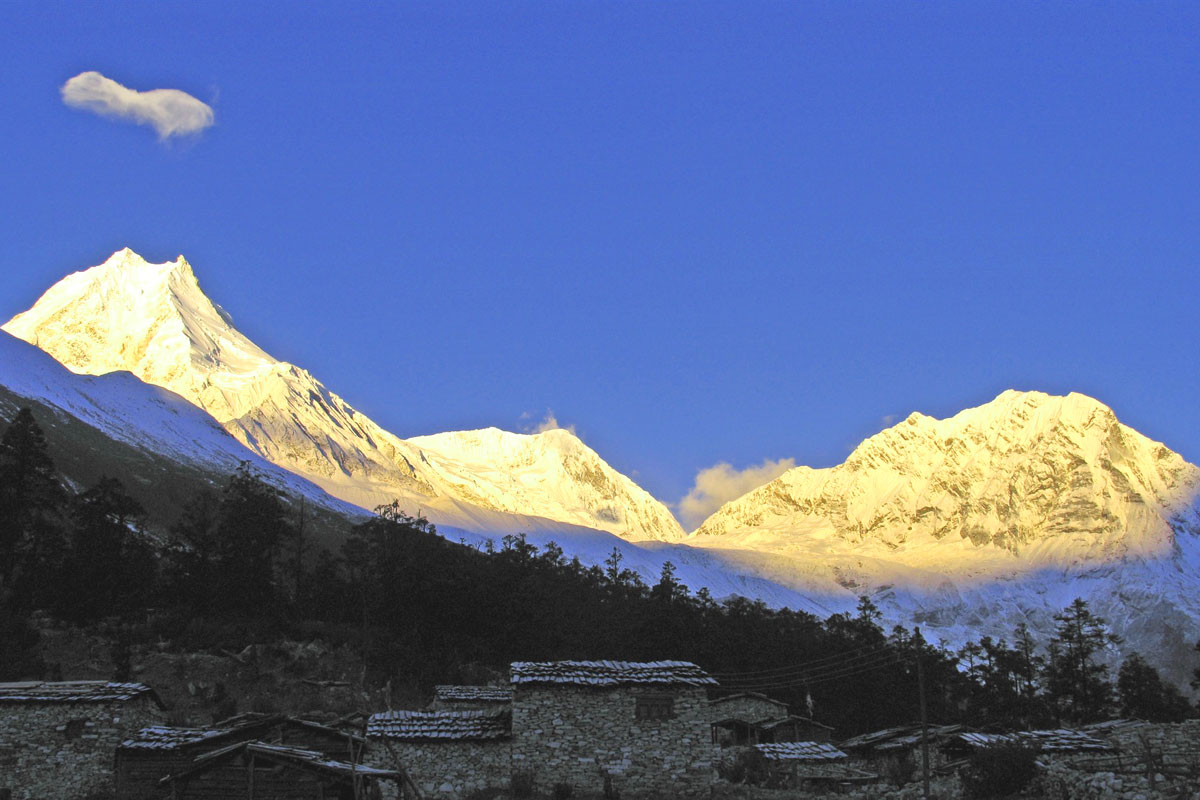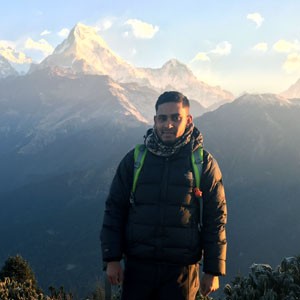Tsum Valley and Manaslu circuit trek is an amazing journey blending the stunning Himalayan landscapes with cultural experiences. Manaslu Tsum Valley Trek in Nepal is one of the challenging trek that circles 8th highest Mount Manaslu and exploration of one of the remote valley in Nepal Tsum Valley.
Tsum Valley is also named hidden valley where various ancient monasteries, Tibetan Buddhist Culture, and serene villages like Mu Gompa and Rachen Gompa can be seen. Choosing the Manaslu Circuit trek is one of the perfect combination of natural beauty, cultural experiences and adventure.
This trek takes you through one of the remote and untouched area of Nepal. For those seeking adventures the trek takes you to the challenging Larky La Pass at the altitude of 5,160 meters. This trek also takes you through beautiful landscapes.
Highlights of Manaslu Circuit and Tsum valley trek
Mt Manaslu (8,163 meters)
Mt Manaslu is part of Mansiri Himalayan range in Nepalese Himalayas. The name of Mt Manaslu derived from the Sanskrit word “Manasa” which means “soul” or spirit. This Mountain Known for its breathtaking scenery, challenging climbs is located in Gorkha district of Nepal. The Manaslu has attracted many experienced mountaineers over the years and trekkers who are captive by Manaslu circuit trek.
Tsum Valley
The Tsum Valley is a remote and sacred region in northern Gorkha, Nepal nestled with the Manaslu conservation area. This valley was opened to trekkers in 2008. The valley preserves the pristine environment and ancient Tibetan Buddhist Culture. The valley features the dramatic landscapes, glacial rivers and dense forests as it is surrounded by towering peaks like Ganesh Himal, Srigni Himal and Boudha Himal.

Budhi Gandaki River Gorge
Budhi Gandaki river gorge is a natural breathtaking feature located in Nepal. It is formed by the Budhi Gandaki river flowing south from the glacial regions of the Manaslu and Ganesh Himal ranges. It is mainly known for its dramatic cliffs, dep forests and picturesque villages. This Gorge is one of the key highlight of the Manaslu circuit trek. This area is also important for its potential hydropower development.
Mu Gompa
Mu Gompa is a remote Tibetan Buddhist mastery located in Tsum valley of Nepal, at an altitude of 3,700 meters. It is the highest monastery in the valley and holds great spiritual significance for the local people. The monastery is surrounded by various Himalayan ranges like Ganesh Himal and Srigni Himal offering an amazing mountain view. Mu Gompa is one of the main stop in the Tsum Valley trek as it offers a chance to experience Tibetan culture to the visitors.
Milarepa’s Cave
Milarepa’s cave is located at Manang district of Nepal with the altitude of 13,450 ft (4100m). This cave is mainly known as it is believed that renowned Tibetan yogi, poet, and spiritual teacher spent time meditating at 11th century. This cave is situated near the village of Nyesyang in above Manang. The trial offers the wonderful mountain, valleys, and Marsyangdhi river along the way to Milarepa’s cave.
Sama Gaun Village
Sama Gaun village is Tibetan culture influenced village in Gorkha district in Nepal. This place is a famous stop for Manaslu Circuit trekkers. It provides with cultural significance to trekkers. Although being at high altitude its good Accommodation facilities make Sama Gaun famous among trekkers. Sama Gaun is one of the place to acclimatize to the high altitude before passing through Larky la pass and Base Camp.
Tibetan Culture
The culture and the tradition of this area has been greatly influenced by the Tibetan culture. People of this region follows Tibetan Buddhism. The locals speak Tibetan dialect. Various Tibetan festivals like Losar (Tibetan new year) with Tibetan music and dance.
Which is the best season to do Tsum valley trek with Manaslu circuit?
The best seasons for Tsum valley trek with Manaslu circuit are spring and autumn. These seasons offer the most favorable weather and trail conditions, with clear skies and excellent temperature. The detailed information about best season to trek are given below:
Spring (March-May)
The weather during spring the spring is warm and pleasant, with the temperature of daytime ranging from 10-20 degree celsius in the lower altitude and extreme cold during nighttime especially in higher altitudes. High pass like larky pass becomes more comfortable with ideal trail conditions. You can observe the beautiful scenery with an amazing rhododendron forest. You can also see local villages becoming alive as people preparing to plant their fields.
Autumn (September-November)
Autumn is one of the very famous season for trekking. The condition of weather during November is cool and stable. Normally the temperature of a daytime ranges from 10-15 degree celsius in lower altitudes and very cold in higher altitudes. The earlier monsoon rain clears the dust leaving clean sky and air. Various major Nepali festivals falls during this season adding an opportunity to explore various cultural insights.

Monsoon (June-August)
During the monsoon season the trekking becomes challenging due to heavy rainfall and slippery trekking trials. Trekking in this season is very challenging as there is a high chance of flood and landslides at the lower altitudes. During this season you can observe the clean environment and greenery everywhere. This adventure is perfect for adventure and challenges lovers.
Winter (December-February)
Trekking in winter is not recommendable, as the trials might be covered with snow and it is extremely cold. The trekking path is less crowed during this season but there might be fewer tea houses found as it may be closed due to cold. It might be very difficult to pass the highest Larky La Pass due to snow landslides in many places. Though trekking in winter is challenging it can be rewardable to adventure loving trekkers. Trekkers need to be fully prepared to trek in winter with proper planning and packing.


